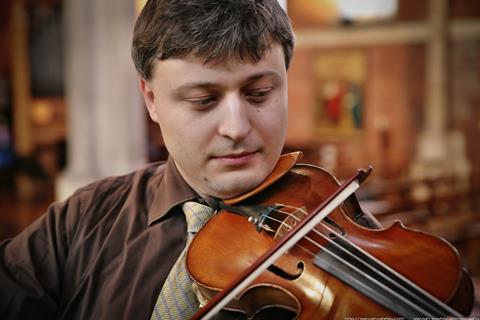In the first of a series of blog posts, violin teacher at the Guildhall School of Music and Drama Junior department Ivo Stankov outlines his motivation for creating the Violin Tips Practice Guide

Explore more Featured Stories like this in The Strad Playing Hub
Daunting, chaotic, lacking purpose, or even unproductive: that’s how a number of my students would have described their practice routine a while ago. Often it would become difficult - they would have argued - to make practice purposely efficient and keep it well-structured without further help from the teacher. What exactly should be practised and for how long, how to remember so many details, how to prioritise in order to get the best results from practising?
The reality is that discussing practicing habits in the lessons can be often neglected. Realising the need to help my students address those practice questions prompted me to start writing down some of the topics (or tips) and practice suggestions I was teaching in my lessons. Over 250 tips were compiled into one-page-charts, and structured into three major sections and nine chapters, developing eventually into a Violin Tips Practice Guide.
The guide’s main goal is to break down those 250 tips to their core, and to provide the instructions for a point-by-point practicing routine, such as learning about patterns (upon which a great deal of left and right-hand technique is based), or executing models (sound types) of a certain musical character.
In my teaching experience, simplifying and breaking up technically complicated musical tasks in practice usually paves the way to achieving greater clarity, precision, and control, thus granting students more freedom of expression in performance. The aim of this guide is precisely to get to the bottom of each technique, magnifying its details, in order to equip students with the right technical and musical skills when performing.
Further info on: Violin Tips Practice Guide - Preface
The 3-Points Method
Independently of how productive or inspiring one’s teaching can be in a lesson, the sheer volume of details and information to take home and to remember can be overwhelming for many students. Consequently, this impacts the learning process at home and to a certain extent minimises the practice results, depending of course on each student’s ability to retain information during a lesson.
What if there was a ‘reminder system’, or a method, whereby the information from the lessons could be conveniently revised and memorised by students at home? Wouldn’t such a method positively impact on their independent practicing routine?
My response was to develop, in addition to the Violin Tips Practice Guide, the ‘3-Points’ Method - a learning tool which helps students to quickly identify and easily remember three points as verbal and mental action words, or commands:
1. Description (what is to be learned)
2. Action (how to learn it)
3. Result (memorise how it ‘feels’ once it’s learned)
Those three key action words, or commands, would then be applied to each Violin Tip chart featured in the Practice Guide. In the Method, the action words are presented for convenience in red, changing to a green when memorised and practiced, which also visually reinforces the expected result.
The ‘3-points’ method is therefore, in addition to the Guide, a useful mental system to remind the student how to efficiently structure practice. It helps the student to identify what exactly to focus on point-by-point at home, and to learn in detail specific technical tasks or repertoire.
Further info on: How the Method Works
The guide’s three main sections
The structure of instrumental learning is like two sides of a coin - technical and musical. On one side we have left and right-hand to deal with technically (with all the related motor skills), and on the other, the three basic musical aspects - intonation, rhythm, and sound.
Digging a little deeper however we would discover that learning principles could be grouped further into 3 major sections -
1. Learning how to play – the basic principles of posture, left and right-hand technique working together technically
2. Learning how to practice a musical piece – what are the stages of learning
3. Learning how to perform – how to approach and deal with performance
Further info on: How the Guide Works
The Fundamental Individuality Rule and the Guide
How do the practicing principles featured in the Guide fit with the individuality of each student?
The individuality and musicality of each student is unique and should always be taken into account in order to adapt and shape the learning process accordingly. That process should constantly be upgraded and developed with the help of this Guide and the teacher’s input, until it becomes over time a useful and very personal practicing routine. The student would then be able to purposefully use it to achieve the best results in performance.
Further blog posts will include topics of improving technique in practice, how to practise a piece and how to perform with confidence.
Read: Top tips for putting the joy into practice
Read: Making the most of one hour of practice
Discover more Featured Stories like this in The Strad Playing Hub
Topics
The 3-points practicing routine: Description - Action - Result
- 1
 Currently reading
Currently readingThe 3-points practicing routine: Description - Action - Result
- 2
- 3
- 4














































No comments yet